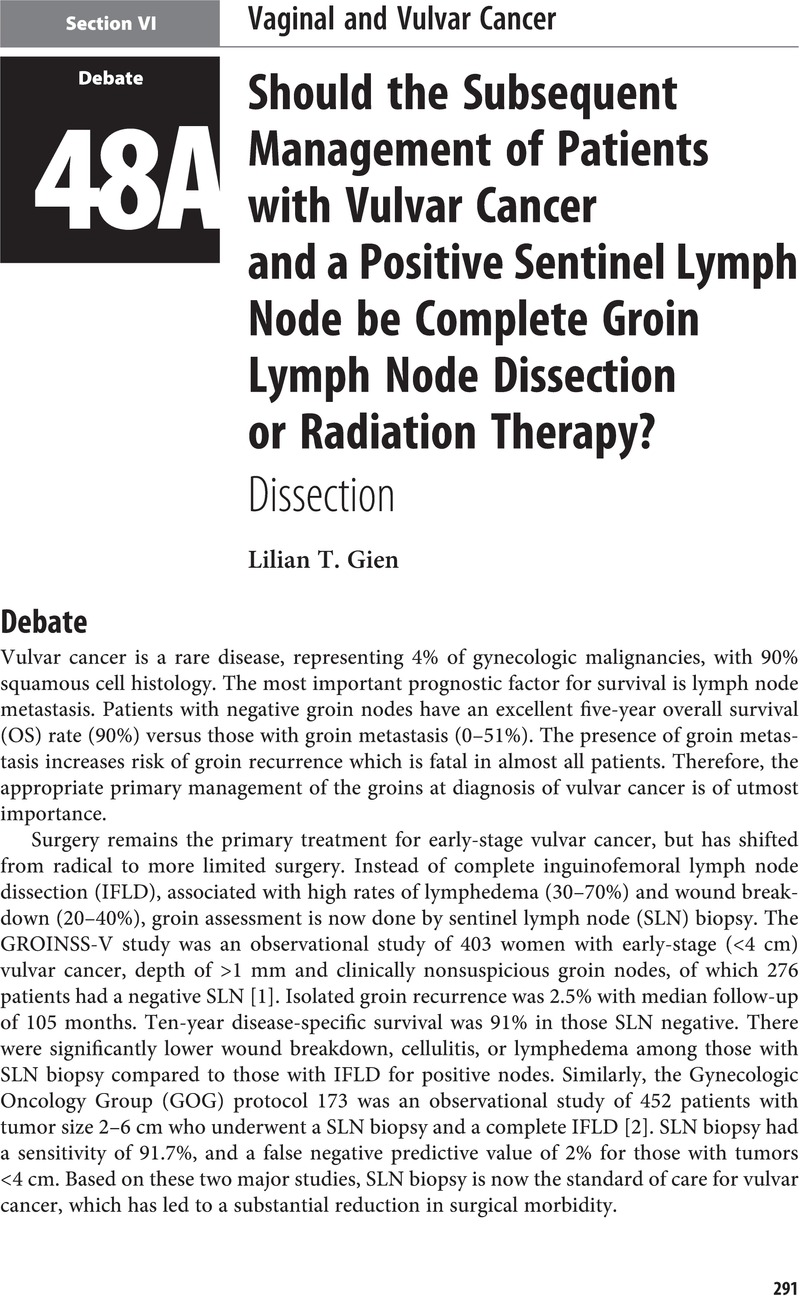Book contents
- 50 Big Debates in Gynecologic Oncology
- 50 Big Debates in Gynecologic Oncology
- Copyright page
- Contents
- Contributors
- Section I Perioperative Management
- Section II Screening, Prevention, and Early Diagnosis
- Section III Ovarian Cancer
- Section IV Endometrial Cancer
- Section V Cervical Cancer
- Section VI Vaginal and Vulvar Cancer
- Index
- References
Section VI - Vaginal and Vulvar Cancer
Published online by Cambridge University Press: 20 July 2023
- 50 Big Debates in Gynecologic Oncology
- 50 Big Debates in Gynecologic Oncology
- Copyright page
- Contents
- Contributors
- Section I Perioperative Management
- Section II Screening, Prevention, and Early Diagnosis
- Section III Ovarian Cancer
- Section IV Endometrial Cancer
- Section V Cervical Cancer
- Section VI Vaginal and Vulvar Cancer
- Index
- References
Summary

- Type
- Chapter
- Information
- 50 Big Debates in Gynecologic Oncology , pp. 291 - 312Publisher: Cambridge University PressPrint publication year: 2023

